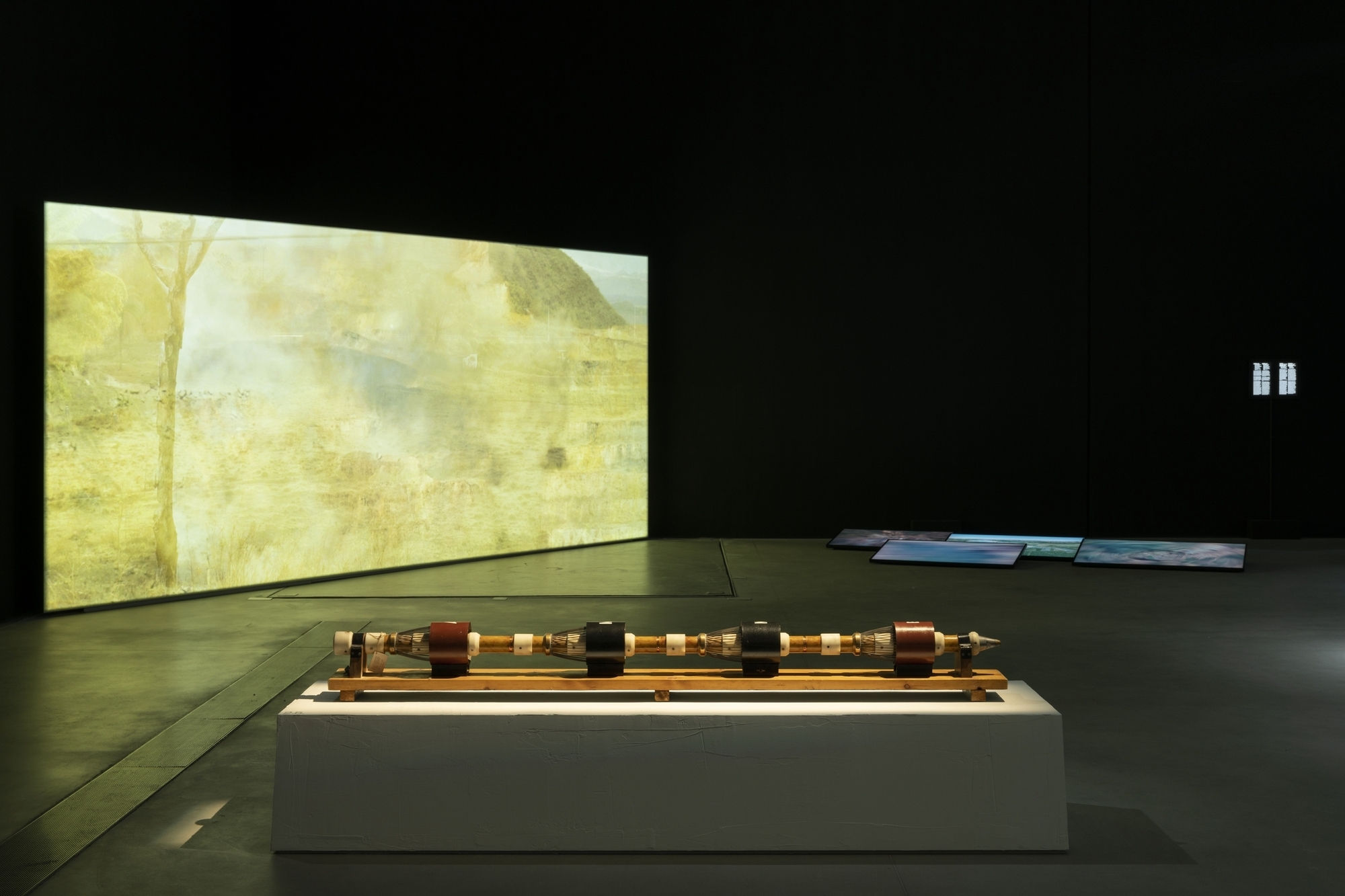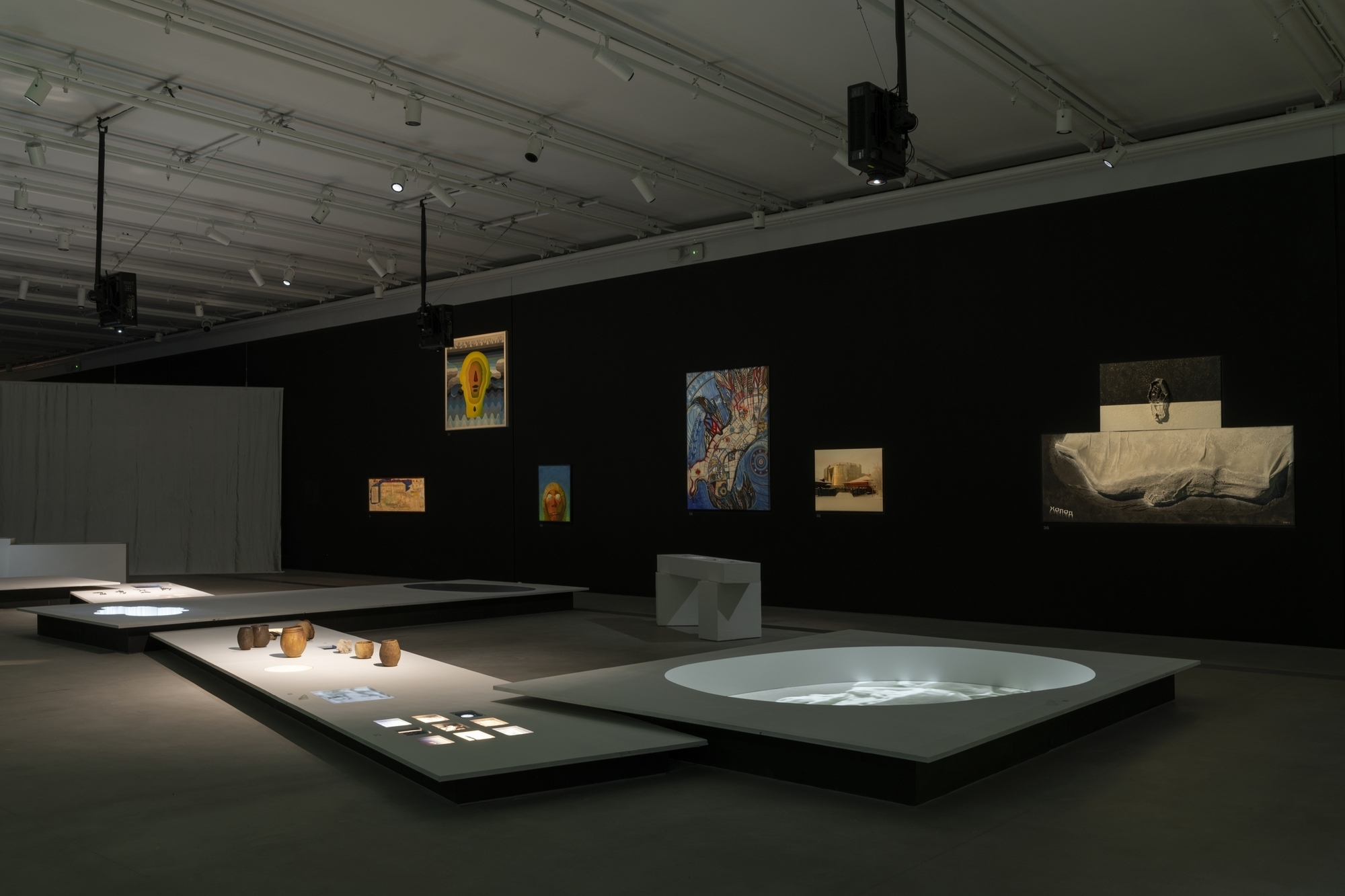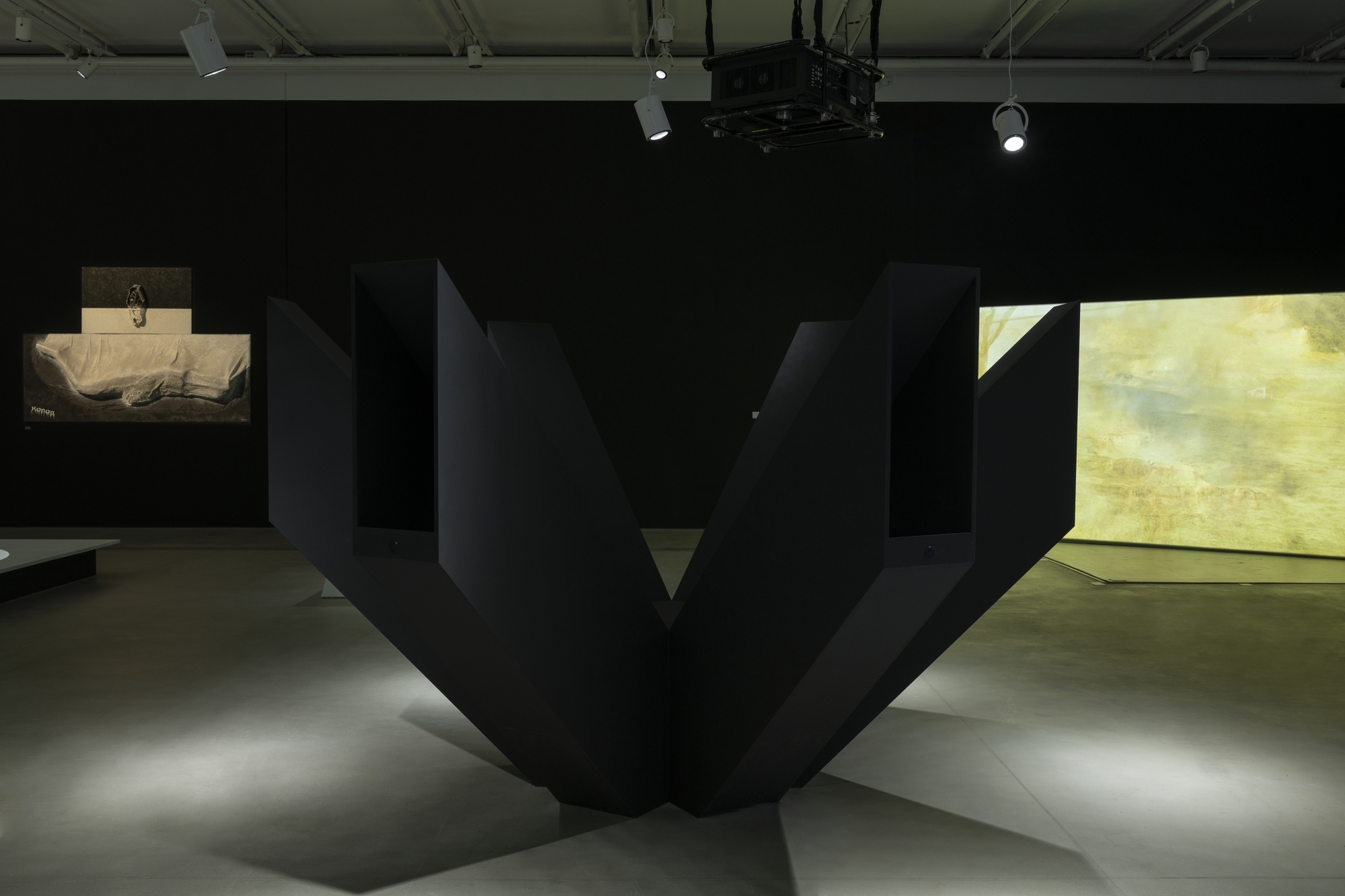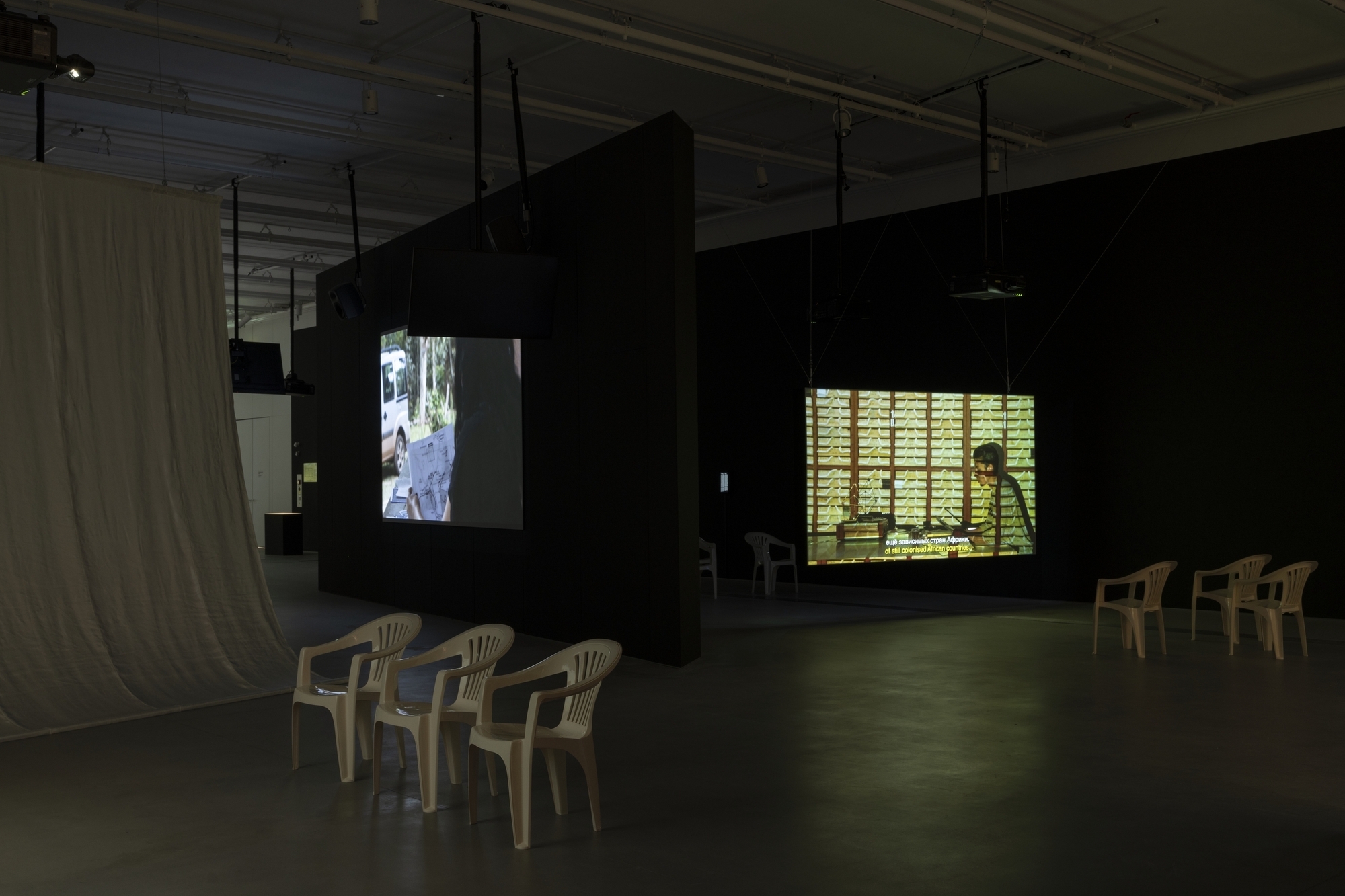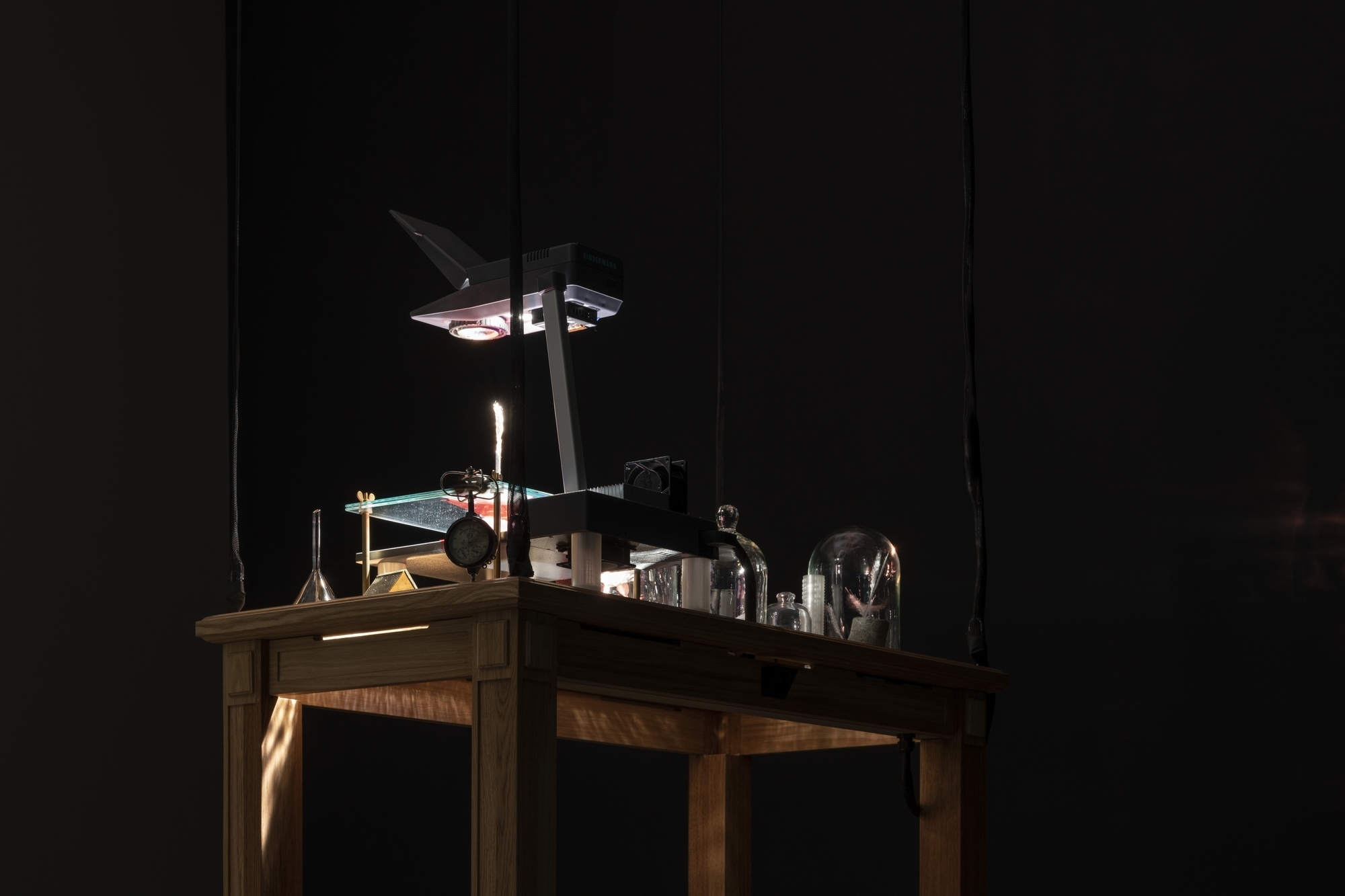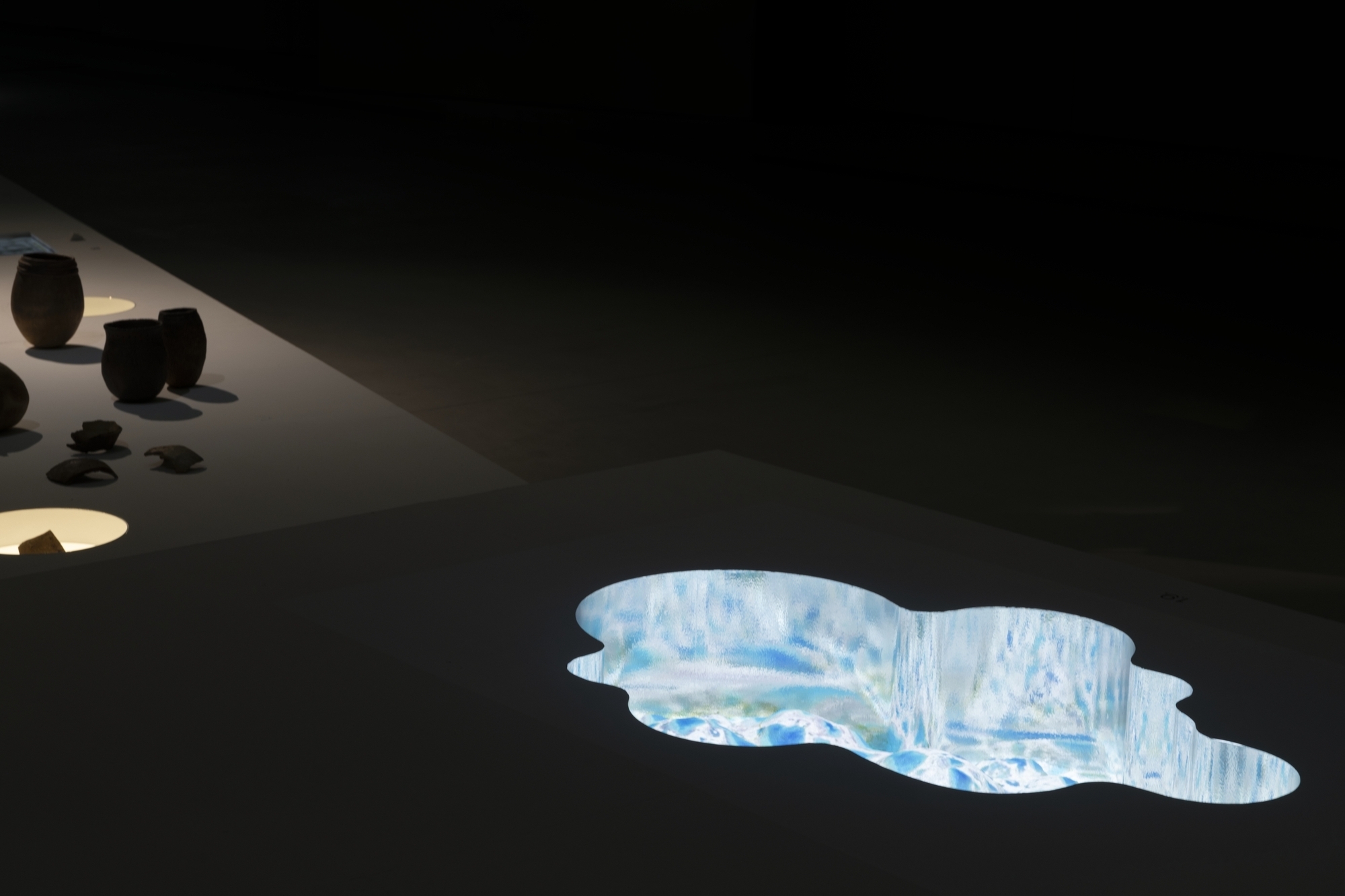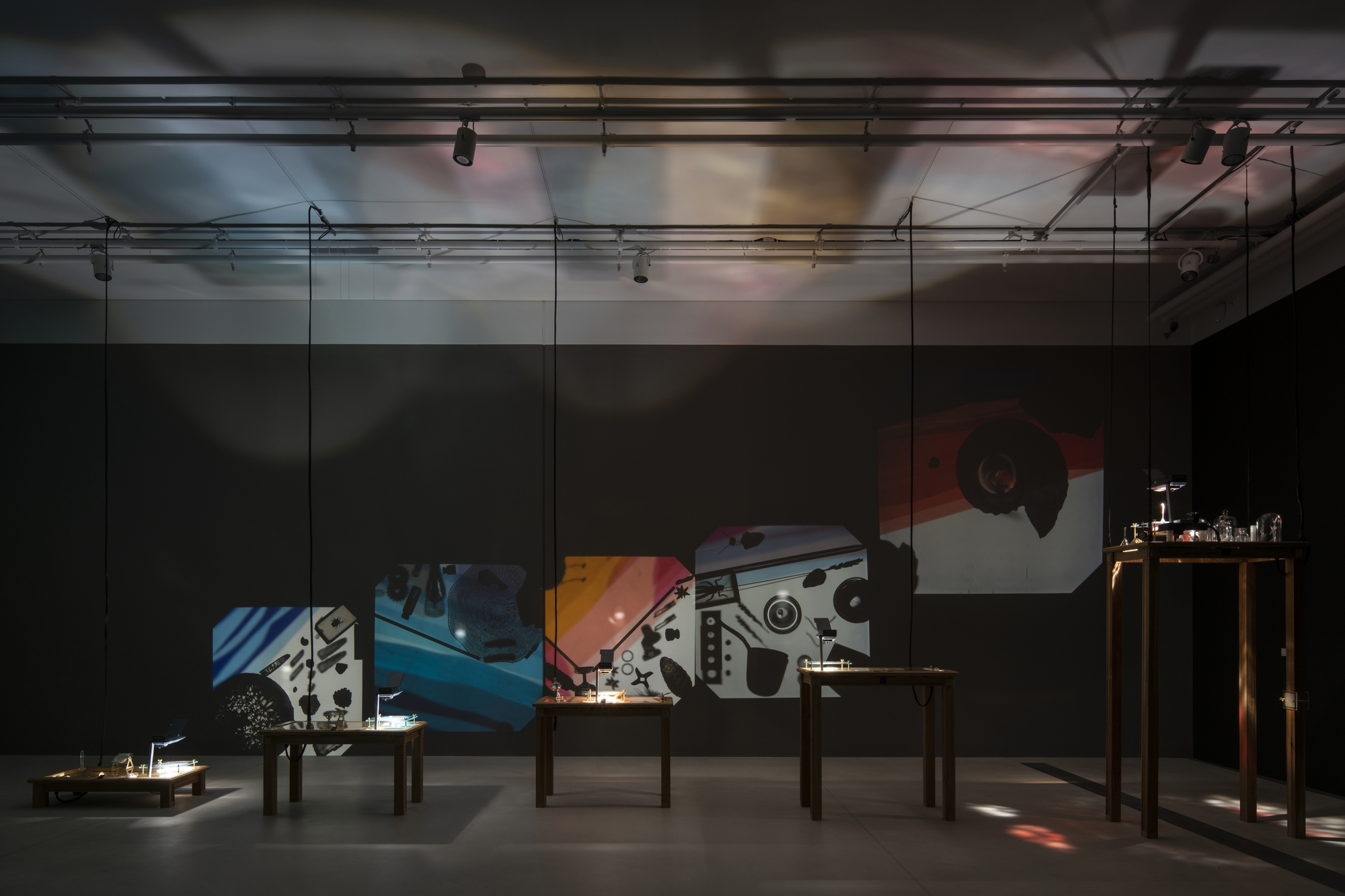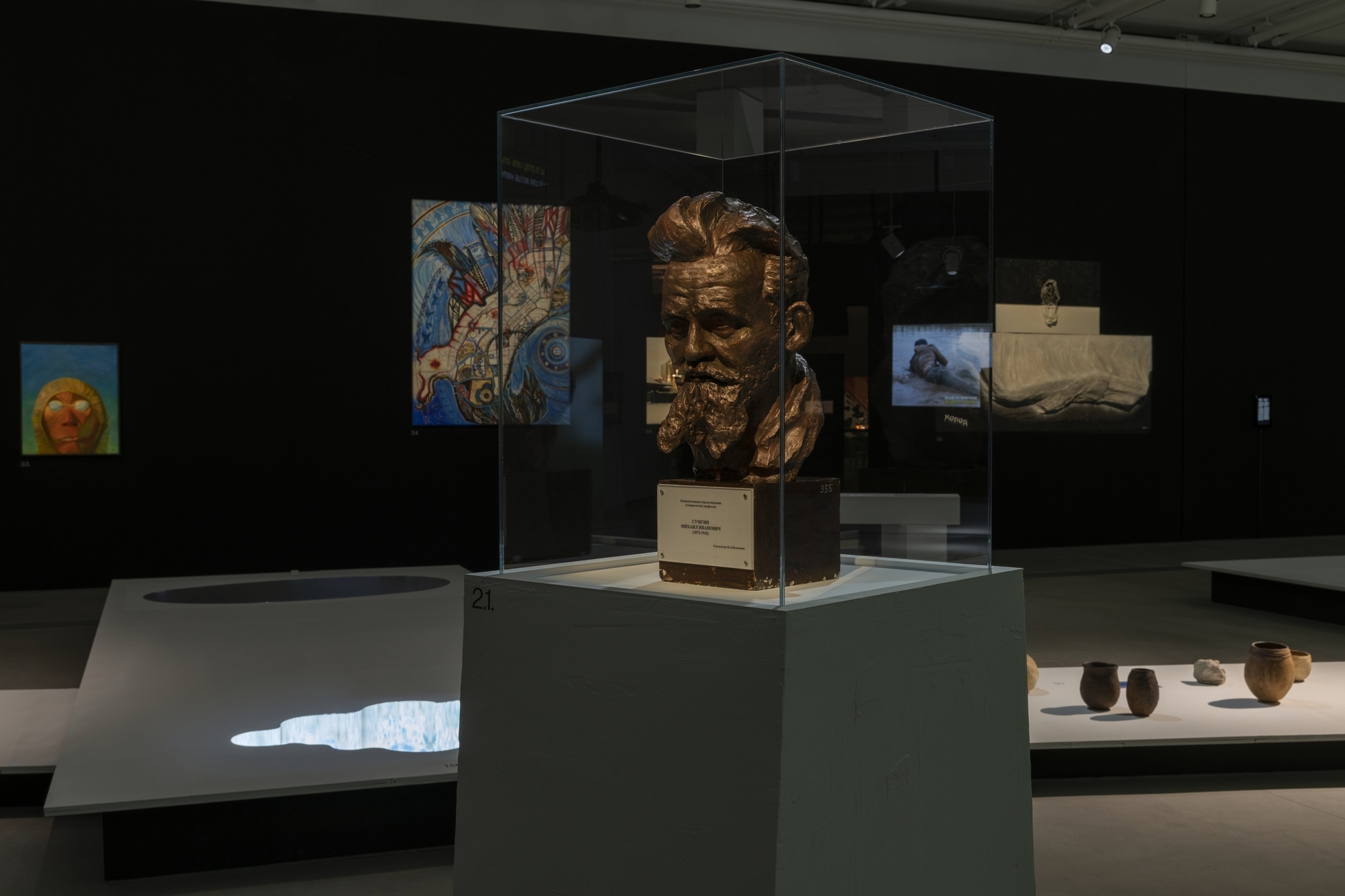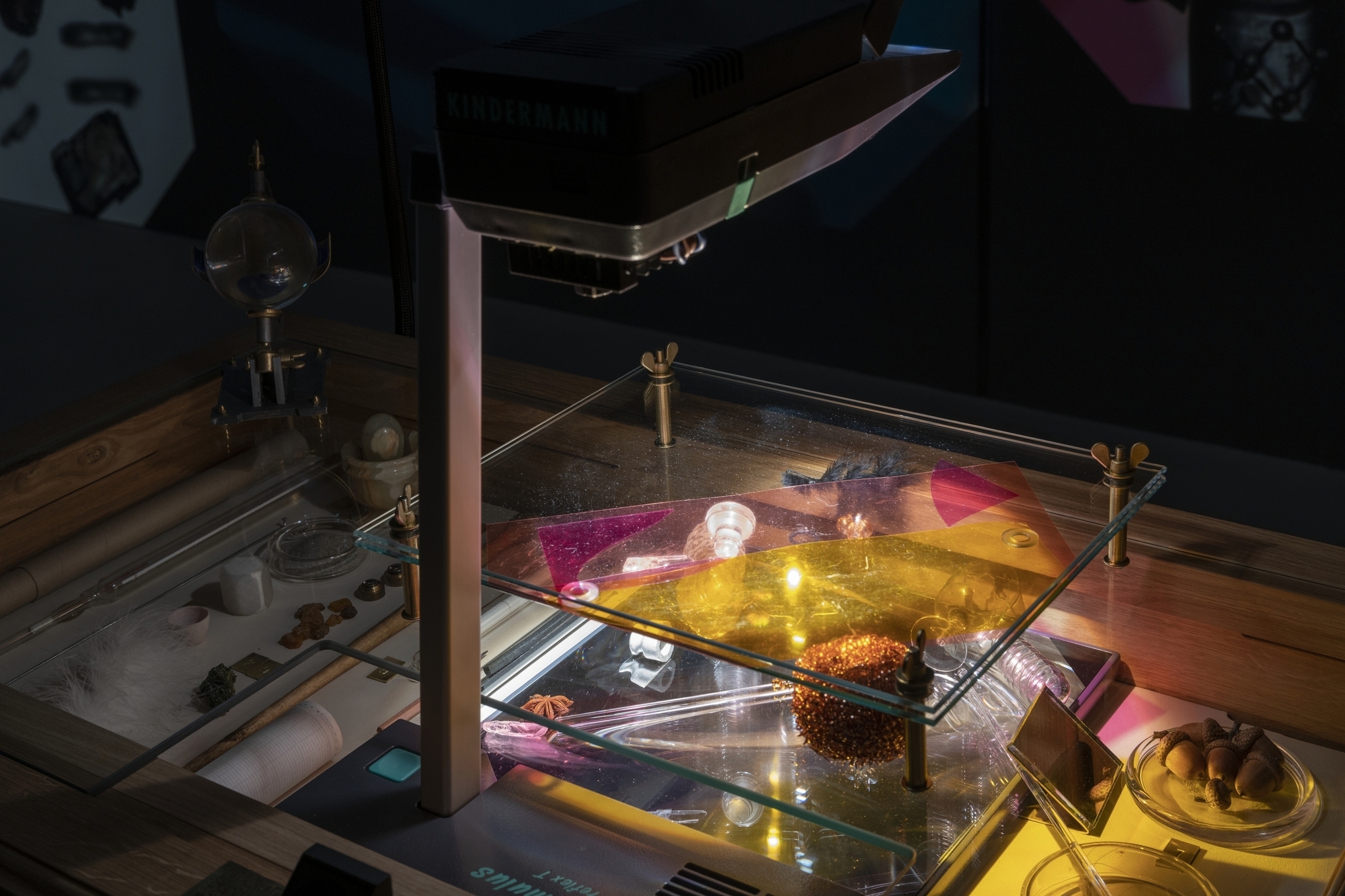An exhibition about the Earth and earth, the scientific and the intuitive, the small in the context of the planetary.
Similarity Index
- Date:
- 25 Apr–
22 Sep 2024
- Age restrictions
- 16+
The Earth Similarity Index is a scale reflecting the physical resemblance of celestial bodies to our planet that could theoretically be used for an initial evaluation of the suitability of a given planet for humans and other living organisms. Taking the Earth as its standard, the Earth Similarity Index is calculated according to a complex formula that was developed by an international group of biologists, chemists, astronomers, and planetary scientists. It serves, among other things, as a means of estimating the likelihood of various scenarios for the evolution of life in all of its forms.
The scientific approach to the planet Earth as a holistic organism serves as a point of departure for Similarity Index: the artistic works featured in this exhibition pair scientific approaches with the subjective perspectives of individuals or of communities—theories and facts are combined with poetic, symbolic, intuitive, political, or speculative material.
Illustration: kakzdorovo
Planet and soil, territory and habitat, reservoir of memory and wellspring of resources, recipient of labour, care, and protection, fragile organism and insurmountable force—Similarity Index tells different stories about the Earth, yet withholds a single, clear definition. Instead, each visitor is left to construct a definition of the Earth of their own, drawing on their run-of-the-mill scientific knowledge and personal experience—or to give in to one of the artistic interpretations they are presented with at the exhibition.
It may seem that the deterioration of the biosphere is a problem of planetary scale; that climate change, technological catastrophes, the loss of biodiversity and extractivism—everything that has come to sound as the troubling leitmotif of the last decade—are the concern of scientists and eco-activists, and as distant as possible from individual, cultural, or historical perceptions of the Earth. Similarity Index approaches the Earth as a planet from a variety of perspectives; for the featured artists, Similarity Index is not just an opportunity to ponder a puzzle of science and political and economic interests, but also a chance to study the history of colonialism, the slave trade, repressions and wars, and, at the same time, to consider the Earth in a way that incorporates individual experience, whether this experience relates to mine shafts, forgotten allotments, or lost graves. In this exhibition, the Earth Similarity Index ceases to be a neutral formula and becomes instead a framework through which each person can become conscious of their own role in forming and maintaining the Earth’s ability to support life—the life of humankind and of other organisms.
The majority of the works in Similarity Index are videos, films, and installations by Russian (Gentle Women Group; Zhenya Chaika and Zhenya Gavrilov; the Laboratory of Geocultural Research) and international (Lucas Bambozzi, Li Binyuan, Ana Vaz, Olga Grotova, Filipa César, Deborah Stratman, Haris Epaminonda) artists. To watch them through, one needs to either spend many hours at the exhibition, or visit it multiple times. A separate room is given over to a programme of film screenings, the schedule of which can be consulted on the screens at the entrance to the screening hall.
The Similarity Index exhibition is an attempt at architectural upcycling, a secondary use of materials and constructions from previous projects at
Attempts to form a holistic concept of our planet have always been mired in contradictions. Is it an immense world, or a mere speck in the Universe? The most powerful of the elements or a fragile organism? An object of religious veneration or raw material for exploitation? The earth has always eluded a single definition. The Similarity Index exhibition gives us the chance to look at our home through a kaleidoscope of diverse approaches, to marvel, be horrified, or fall into a contemplative trance before it.
— Artem Timonov, curator
* This exhibition is composed primarily of video works, and is best experienced with headphones or an induction loop for your hearing aid. Please take a device at the entrance stall, and kindly ensure you return it upon completing your tour.
Photo: Daniel Annenkov
Authors
Lucas Bambozzi — Li Binyuan — Zhenya Chaika — Filipa César — Camila Freitas — Zhenya Gavrilov — Gentle Women Group (Alexandra Artamonova and Evgenia Lapteva) — Olga Grotova — Patricio Guzmán — Haris Epaminonda — Ben Rivers — Deborah Stratman — Anocha Suwichakornpong — Ana Vaz — Zhao Liang — Yorgos Zois
Curators
Katerina Chuchalina, Anna Ilchenko, Artem Timonov
Yosso: Permafrost
Authors
Archetype Group (Alexei Abramov, Lyudmila Fedorova, Natalia Khristoforova, Nadezhda Komissarova, Sofia Makarova, Alexandra Neustroeva, Ustinya Prokopyeva, Anna Savvina, Sargylana Skryabina, Elena Vasilieva) — Alina Fedotova — Irina Filatova — Viktor Gaiman — Roman Grigoriev — Grigory Kabalov — Maia Kust — Alfred Mayevich — Sergei Novikov — Boris Osipov — Viktor Shelepen — Maxim Sher — Dmitry Sivtsev (Suorun Omollon) — Egor Sleptsov — Mikhail Starostin — Ien Suhr — Nina Velmina — Klaus Vetter
Curators
Laboratory of Geocultural Research (Elena Vasilieva, Dmitry Zamyatin) with the participation of the Arctic Institute of Culture and Arts and the Institute for Humanities and Indigenous Studies of the Siberian Branch of the Russian Academy of Sciences
Architect
Sasha Kim
Lighting
Ksenia Kosaya
Producers
Sasha Chistova, Maria Kalinina, Yana Romashkina
Technical production
Andrei Belov, Artem Kanifatov, Artem Marenkov, Konstantin Petruk
Art logistics and registration
Daria Krivtsova, Ekaterina Narkizova
Accessibility and inclusion curators
Vlad Kolesnikov, Vera Zamyslova
Media specialist
Anna Kolpakova
The Similarity Index exhibition is organised with the participation of
FiGa Films
Light Cone
LUX, London
Museum of the History of Permafrost Research at the Melnikov Permafrost Research Institute (part of the Siberian Branch of the Russian Academy of Sciences)
Rediance Films
Zharaev National Centre for Audiovisual Heritage of the Peoples of the Republic of Sakha (Yakutia)
